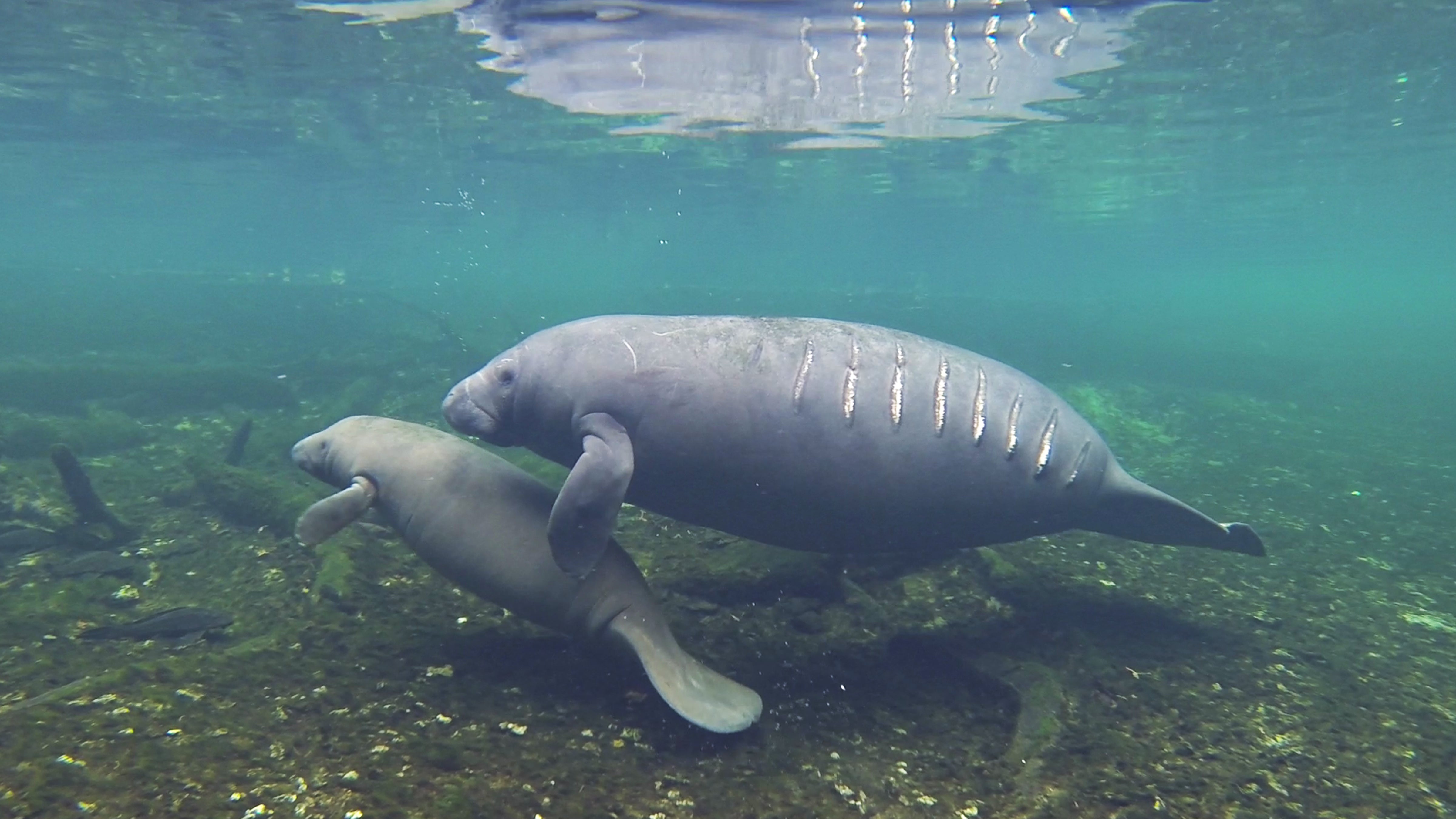5 MIN READ
3-18-2024
The Gentle Giants Of
The Coastal Waters
And Plastic Pollution
Mikaela Walsh, 4ocean Research Analyst
Manatees newest predator: Plastic pollution. Plastic is contaminating their food source and causing irreversible harm.
Florida is a state in the United States of America known for its abundant diverse wildlife. One of the most unique animals inhibiting these warm waters in the Sunshine State is the Florida Manatee. These gentle giants are found along the rivers and intercoastal waters. They have a unique quality of entering different water salinities; they can enter saltwater, brackish water, and freshwater. Manatees are massive animals that weigh up to 3,500 pounds and grow as long as 13 feet. Furthermore, they are very gentle and cause no harm to other organisms. These herbivores are referred to as the sea cow, and their primary purpose is to control the levels of seagrass beds. By doing so, these animals can consume up to nine percent of their body weight daily. These gentle giants face many threats trying to survive in the aquatic environment, and the newest threat is plastic pollution.

Manatees play an essential role in our ecosystems by controlling seagrass levels, but they also fall victim to ingesting plastic pollution that inhabits our waterways. Seagrass beds have been found to be the hub for microplastic contamination in recent years. Microplastics are either primary, meaning the plastic is made into microplastics like microbeads or glitter, or secondary, meaning the microplastics come from more prominent pieces of plastic that are broken down into smaller plastic particles. This phenomenon occurs because plastic is not biodegradable but will fragment into smaller pieces of plastic, known as microplastics. Microplastics have properties that attract toxins and pollutants. These microplastics have been found embedded in seagrass beds due to an excellent source for these plastics to accumulate. The microplastic concentrations in seagrass beds were higher than in non-vegetated areas and surrounding seawater. The research found that the presence of macroplastic, or plastic debris, was higher in seagrass beds due to plastic debris getting stuck in the vegetation.

Knowing that the manatees' primary food source has found high levels of microplastic concentrations, researchers further examined if the manatees faced a new threat to their survival. In a 2020 data collection, researchers found shocking information about the impact of plastic pollution on the aquatic environment. This data showed Florida manatees from 2009-2018 that fell victim to plastic ingestion or debris entanglement. This information further revealed that out of 700 Florida Manatees, 99% have swallowed plastic. The plastic debris examined included fishing lines, balloons, plastic bags, and many other items. Floating plastic gets entangled in these seagrass beds, enabling the manatees to ingest plastic debris without knowing it. Abandoned fishing gear is another considerable issue these manatees face with ingestion or entanglement. Plastic debris present in the intestinal passages can cause severe discomfort and even tears. Plastic debris and microplastics accumulate in animals' digestive tracts which can lead to starvation and death. The production of this plastic was not intended for consumption by animals or human beings. Plastic debris has found its way into the gentle giants of the waterways.Plastic ingestion harms marine mammals and causes even more concern when discussing animals that are already having difficulty surviving in the wild. While manatees face many challenges, boat strikes are the most harmful. Manatees enjoy grazing the surface of the water by looking for food or sunbathing, causing the massive animal to be susceptible to boat injuries on the surface. Boats collide with these manatees without seeing them, sometimes causing fatal effects. Manatees are extraordinarily playful and friendly, so they like to hang around docks in hopes of fishermen spraying a hose on them. Another issue these gentle giants have to face is habitat loss. Whether this is from harmful algae blooms, food reduction, or manufactured habitat loss, these animals like to be in diverse environments in the warm Florida waters. Still, they are having difficulty finding a suitable habitat. Manatee calves stay with their mother for 1-2 years after birth and depend on them for guidance on food sources and how to migrate. Moreover, if the manatee calf gets disconnected from the mother, lost, or if the mother passes away, the calf will become an orphan and need human interference to help survive. Manatee orphans are a rising issue because of the decreasing population of manatees.

The Florida manatee is featured on the endangered animal list due to the many challenges they face on the brink of survival. These animals are crucial for our ecosystem and control seagrass beds to ensure this vegetation does not over-grow accordingly in vast aquatic environments. Many other organisms depend on manatees for their habitat and protection. If manatees were to go extinct, a significant issue would occur between many organisms. Plastic pollution is one of the emerging and detrimental challenges manatees face. The oceanic plastic crisis is affecting not only our major oceans but also all of our waterways across the globe. The manatee is an essential animal in our ecosystem and must be protected at all costs. Plastic pollution is not going away; it only increases with plastic accumulation across the waterways.


You May Also Like



